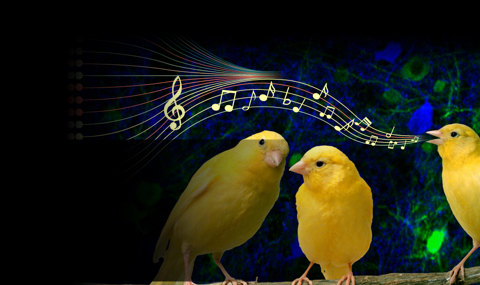Bird songs are sequences of acoustically precise vocalizations called syllables. This robust behavior is learned and driven by a set of brain nuclei (the 'song circuit') homologous to the mammalian thalamic, striatal, and cortical circuits for motor learning and execution.
The syllable sequences in canary song, much like speech and tool-use, unfold in multiple nested time scales. We leverage this rich repertoire to answer fundamental questions about the structure of neural activity patterns and the rules governing the choreography of complex behavior. Mostly we are interested in separating syllable-locked activity patterns - the premotor drive of individual actions - and the neural mechanisms for flexible ordering of such building blocks. These questions are central to our overall understanding of brain function underlying flexible behavior, but are uniquely accessible in canaries.
To address these questions, we developed head mounted miniscope recording of neural activity at the cellular resolution in freely-singing canaries as well as the machine learning tools for processing their complex songs. We combine these approaches with state of the art light-weight electrode arrays to probe fine time scales and with lesion and electrical perturbation experiments to elucidate the role of various nodes in the song circuit in the mechanisms underlying canary song syntax.


